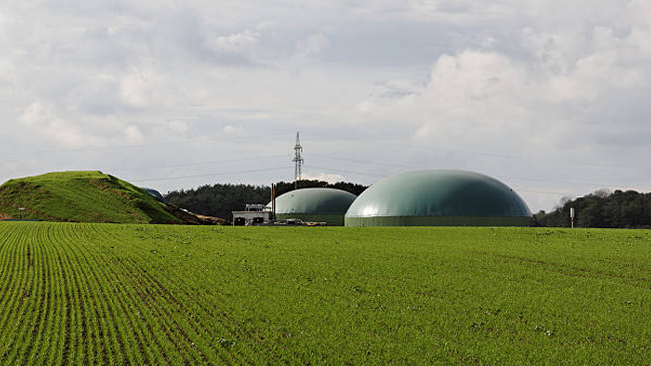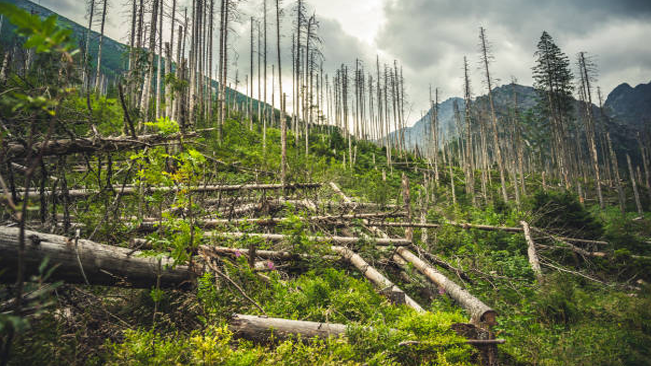Forest Bioenergy: Mitigating Climate Change Potential
- September 2, 2024
- 0 comment
Climate change poses one of the greatest challenges to the global community, with rising temperatures, extreme weather events, and shifting ecosystems threatening the planet’s health and stability. Central to addressing this crisis is the urgent need to reduce greenhouse gas emissions. As the world seeks sustainable solutions, bioenergy has emerged as a promising alternative to fossil fuels. Derived from organic materials, bioenergy offers a renewable energy source that can help mitigate the impacts of climate change. Forest bioenergy, in particular, stands out due to its potential to both provide energy and enhance forest management practices. By integrating forest bioenergy into our energy systems, we can take significant steps toward a more sustainable and resilient future.

Table of Content
- Understanding Forest Bioenergy: Sources and Processes
- Environmental Benefits of Forest Bioenergy
- Challenges and Concerns in Forest Bioenergy Production
- Policy and Economic Factors Influencing Forest Bioenergy
- Future Prospects of Forest Bioenergy in Mitigating Climate Change
- FAQs
Understanding Forest Bioenergy: Sources and Processes

Forest bioenergy is derived from the biomass of forested areas, including wood pellets, biofuels, and other organic materials such as logging residues, sawdust, and forest thinning. These materials can be processed through various methods, including combustion, gasification, and pyrolysis, to generate heat, electricity, or fuel. The conversion of forest biomass into energy is a key process that underpins the carbon cycle, wherein carbon dioxide (CO2) absorbed by trees during photosynthesis is released back into the atmosphere when biomass is burned. However, unlike fossil fuels, the CO2 released from forest bioenergy can be reabsorbed by regrowing forests, making it a more balanced and potentially carbon-neutral energy source.
Environmental Benefits of Forest Bioenergy

Forest bioenergy offers several environmental benefits, particularly when compared to conventional fossil fuels. One of the most significant advantages is its potential to reduce greenhouse gas emissions. By replacing coal, oil, and natural gas with bioenergy, we can lower the overall carbon footprint of energy production. Additionally, forest bioenergy plays a crucial role in enhancing forest management. By utilizing residues from forest operations and promoting sustainable forest practices, bioenergy can reduce wildfire risks, improve forest health, and contribute to biodiversity conservation. Moreover, through sustainable management, forests can act as carbon sinks, sequestering CO2 and further mitigating climate change.
Challenges and Concerns in Forest Bioenergy Production

Despite its benefits, forest bioenergy production is not without challenges. One major concern is the potential negative impact on forest ecosystems and biodiversity. Large-scale biomass harvesting can lead to deforestation, habitat loss, and the degradation of vital ecosystems. There are also issues related to land use, as the demand for biomass could drive changes in land ownership and usage, potentially threatening food security and indigenous rights. Furthermore, the carbon payback period— the time it takes for the carbon released during bioenergy production to be offset by new growth—can vary depending on factors such as the type of biomass used and the sustainability of forest management practices. These challenges highlight the need for careful consideration and regulation in forest bioenergy production.
Policy and Economic Factors Influencing Forest Bioenergy

The development and deployment of forest bioenergy are heavily influenced by policy and economic factors. Globally, several policies and agreements promote bioenergy as a tool for climate change mitigation. Incentives, subsidies, and carbon pricing mechanisms play a crucial role in making bioenergy projects economically viable. However, the cost-effectiveness of forest bioenergy varies based on factors such as biomass availability, processing technology, and market demand. While some regions have successfully integrated bioenergy into their energy portfolios, others face economic and logistical challenges. Continued support from governments and international organizations is essential to ensure that forest bioenergy can contribute meaningfully to global climate goals.
Future Prospects of Forest Bioenergy in Mitigating Climate Change
Looking ahead, the future of forest bioenergy in mitigating climate change is promising, yet it requires careful planning and innovation. Emerging technologies, such as advanced biofuels and more efficient biomass conversion methods, could enhance the viability and sustainability of forest bioenergy. As nations work toward achieving global climate targets, forest bioenergy could play a critical role in reducing emissions and promoting energy security. However, it is essential to balance bioenergy development with forest conservation and restoration efforts. By doing so, we can harness the potential of forest bioenergy to combat climate change while preserving the ecological integrity of our forests.
Frequently Asked Questions (FAQs)
1. What is forest bioenergy, and how does it differ from other renewable energy sources?
Forest bioenergy is derived from organic materials found in forests, such as wood, logging residues, and other biomass. Unlike solar or wind energy, which harness natural forces, forest bioenergy involves converting biomass into energy through processes like combustion or gasification.
2. How does forest bioenergy contribute to mitigating climate change?
Forest bioenergy can help reduce greenhouse gas emissions by replacing fossil fuels with a renewable energy source. When managed sustainably, the carbon released during biomass combustion is offset by the carbon absorbed by new tree growth, making it a carbon-neutral option.
3. What are the main types of forest bioenergy?
The main types of forest bioenergy include wood pellets, biofuels, and other forms of biomass like logging residues and forest thinnings. These can be converted into heat, electricity, or fuel.
4. What are the environmental benefits of using forest bioenergy?
Forest bioenergy reduces greenhouse gas emissions compared to fossil fuels, enhances forest management by utilizing residues, and can help sequester carbon through sustainable forest practices, contributing to overall climate mitigation efforts.
5. What challenges and concerns are associated with forest bioenergy production?
Key concerns include the potential for deforestation, habitat loss, and biodiversity impacts. There are also issues related to land use changes, the sustainability of biomass sourcing, and the carbon payback period, which may affect the overall climate benefits.
6. How do global and national policies influence the development of forest bioenergy?
Policies promoting renewable energy, such as subsidies, incentives, and carbon pricing, play a significant role in the development of forest bioenergy. These policies help make bioenergy projects economically viable and encourage sustainable practices.
7. Are there successful examples of forest bioenergy projects that have reduced emissions?
Yes, countries like Sweden and Canada have implemented forest bioenergy projects that have significantly reduced their reliance on fossil fuels and lowered carbon emissions. These projects showcase the potential of forest bioenergy to contribute to climate goals.
8. What role can forest bioenergy play in achieving global climate targets?
Forest bioenergy has the potential to play a critical role in achieving climate targets by reducing emissions and providing a reliable, renewable energy source. However, it must be developed in conjunction with forest conservation and sustainable management efforts.
9. What are the economic considerations for forest bioenergy projects?
Economic considerations include the availability of biomass, the cost of processing technology, and market demand. Incentives and subsidies are often necessary to ensure the cost-effectiveness of forest bioenergy.
10. What future advancements could enhance the effectiveness of forest bioenergy?
Emerging technologies in biomass conversion, advanced biofuels, and more efficient energy production methods could improve the sustainability and effectiveness of forest bioenergy, making it a more viable option for large-scale climate mitigation.

Gilbert Griffin
Forestry AuthorGilbert Griffin is a forest management expert specializing in sustainable practices, forest health, conservation, and land management. With extensive knowledge in pest control, disease management, and habitat restoration, Gilbert develops strategies to preserve forest ecosystems and biodiversity. Passionate about the natural world, Gilbert adapts to changes in forest management and stays updated through continuous learning. Gilbert also provides seasonal advice to optimize forest care throughout the year.






Leave your comment